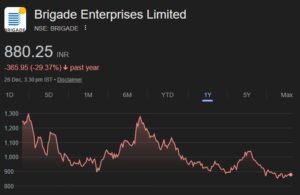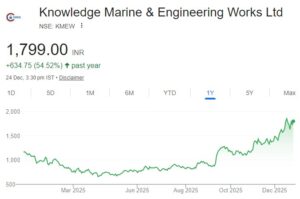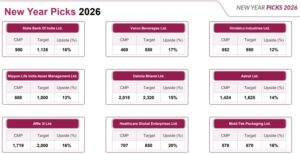

Easun Reyrolle Ltd is a micro-cap stock with a market capitalisation of only Rs. 127 crore. It is a low profile stock that few investors have heard about (at least I hadn’t heard about it until lately). However, it is attracting attention of high profile investors who are slowly but steadily accumulating the stock.
One of the early investors in Easun Reyrolle is Sanjeev Shah (I think he is the same Sanjeev Shah of Fidelity Special Situations Fund who was feted for “stunning” returns and a “cult” status). Sanjeev Shah owns 791,417 shares (3.8) of Easun. In an interview, Sanjeev Shah emphasized that he bought stocks that were fundamentally strong but which were heavily undervalued owing to short-term headwinds.
Sundaram S.M.I.L.E Fund, which is run by stock wizard S Krishnakumar, is another early investor with 12,30,942 (5.92%) shares.
Kenneth Andrade’s IDFC Mutual Fund jumped into the fray in October 2013 when it bought a chunk of 16,00,000 shares at about Rs. 64 per share.
Prashant Jain’s HDFC Mutual Fund came on board in January 2014 with 2,98,500 shares at Rs. 68 per share.
Easun Reyrolle business is to manufacture switchgears, relays and other products used for power transmission and distribution. It has a well established track record going back nearly 30 years. The unique aspect of Easun is that not only does it have a strong presence in the Indian market, but it has also a dominant presence in the international markets in the form of subsidiaries in Singapore, Sharjah, Canada, Germany and Australia. This business model enables Easun to access the latest technology and get high margins from developed markets while maintaining a cost advantage over its competitors by producing in India.
| Dec ’13 | Sep ’13 | Mar ’13 | |
| Sales Turnover | 53.73 | 52.49 | 57.80 |
| Other Income | 0.02 | — | 17.09 |
| Total Income | 53.75 | 52.49 | 74.89 |
| Total Expenses | 49.41 | 49.02 | 51.41 |
| Operating Profit | 4.32 | 3.47 | 6.39 |
| Net Profit | -5.09 | -5.32 | 12.46 |
| Earnings Per Share | — | — | 5.99 |
| Equity | 4.16 | 4.16 | 4.16 |
If you look at Easun’s financials, it is evident that it has taken the full brunt of the economic slowdown due to which power projects are at a virtual standstill. In the financial year 2013, Easun could barely stay afloat with a net profit of Rs. 13 lakhs on a turnover of Rs. 220 crore. In the nine months ended December 2013, Easun has not only reported lower sales of Rs. 145.81 crore as compared to the corresponding period sales of Rs. 163.14 crore, but the net loss has widened to 16 crore as compared to 12 crore.
However, the important point to note is that there is no problem with the company’s execution ability. It is just that the economic slowdown has meant that new orders are not coming in at the same furious pace that they were coming in earlier.
The positive aspect is that the stock price reflects this dismal state of affairs and so the scope for disappointment and further downside is restricted.
If you ponder over it, it appears that in buying Easun Reyrolle, Kenneth Andrade and Prashant Jain are expecting that there will be a turnaround in the global and local economy in the near future. Also, after the elections, there may be big ticket reforms announced for the power sector and incentives given to increase electricity generation.
In fact, Easun already has an order book in excess of Rs. 700 crore. It recently announced that it secured an order from Energex Ltd, an Australian power utility, for supply of secondary switchgear worth US$ 80 Million.
So, if you are a “value” investor, looking to buying distressed companies quoting at rock bottom valuations, and with the patience to hold for the medium/ long term, Easun Reyrolle is a safe and good bet.






Hey,
Sorry cant agree with you, thats not a vaue investing, you are investing in a company making a loss.
However investing in a bank like SBT as of today is value investing.
Well it could be value investing because the P/B is well below 1 and the prospects/intrinsic value may not have eroded much despite the P&L losses.
However I found your value creation triggers to be speculative and not company specific. After the election, if Modi is ruling and infra sector takes off, then many large co. stocks will also rise sharply. Why would we invest in a microcap, which is more risky? This could be a classic value trap.
Fund managers investing in a stock is not enough of a supporting point. They have to do it because it’s their job. They MUST invest in decent looking small cap stocks if they have raised small cap funds. 2-3 of them converging on a company does not necessarily make it a good investment.
If international tentacles and large order book are so nice, then why is not reflecting in the topline numbers?
All the critics on this page are missing the point. These r not ur average joe fund managers who live in herds and eat mediocre grass at the center. These fund managers are rare exceptions who venture out in the open to eat fresh grass (multibaggers) at the risk of being eaten by the lion.
sure they will have scratch marks all over their body, but u see the decade long result and u know, freak show large cap funds live and die in mediocrity and barely beat FDs and get beaten by SENSEX hands down whereas these studs average 27% CAGR.
I like the point that they have the technology with them. Once you have the technology you can differentiate yourself from others ensuring better bargaining power. Since no major investment took place in T&D space for the last few years, if we see any revival in order announcement these stocks would do well. Past is know to everyone. future performance will depend on future data points which i believe looks robust as of now.
The stock price as of today is Rs. 83, but even if there is a big demand for say, electrical switchgears, I think the average consumer will go for either L&T or Havells or Alstom instead of an unheard of company.
Some big HNIs are investing heavily in the stock.